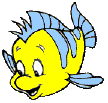what animal would you like to be?
By funnysis
@funnysis (2619)
United States
42 responses
@dream2night (624)
• Latvia
19 Feb 07
I would like to be manatee. They are vegitarians and swim all day. They have very sweet nature and they have friends around them.
@flashpixel (1414)
• Malaysia
27 Nov 06
i want to be a dinosaur in the modern age :p wont i be famous??? all will surely take care of me and i know am gonna be ewell serviced moer than bill gates :D
@maddy10884 (218)
• United States
26 Nov 06
I would like to be a lion... king of the jungle...
2 people like this
@wildhorse (1293)
• Egypt
22 Mar 07
You can tell from my avatar and my username that I would want to be a horse :) I always liked horses especially wild ones running in the open nature :)
@patrice7 (1191)
• United States
30 Mar 07
hello funysis. i think that if i were to be an animal i would like to be a phoenix. i would like to become the most mysterious and beautiful bird on earth and beyond. well i am daydreaming but then again we wouldnt know what could happen right?, lols.
1 person likes this
@merihluanne (254)
• Philippines
28 Apr 07
I would like to be a unicorn , if that can be considered as an animal. A magical animal maybe? I would like to glow when I fly.
@joimarquez (1836)
• United States
3 Jun 07
i would like to be a bird, so i can fly and see the world.
@rapidfire (100)
• United States
25 May 07
i want to be a bird flying far n wide maybe an eagle,strong n sharp
1 person likes this















![Moai Rano raraku - Moai are statues carved from compressed volcanic ash on Rapa Nui, Chile (Easter Island). The statues are all monolithic, that is, carved in one piece. The largest moai erected, "Paro", was almost 10 metres (33 feet) high and weighed 75 tonnes (74 Imperial tons, 83 American tons).[1] One unfinished sculpture has been found that would have been 21 metres (69 ft) tall and would have weighed about 270 tons.
Fewer than one-fifth of the statues that were moved to ceremonial sites and then erected once they had red stone cylinders (pukau) placed on their heads. These "topknots", as they are often called, were carved in a single quarry known as Puna Pau. About 95% of the 887 moai known to date were carved out of compressed volcanic ash at Rano Raraku, where 394 moai still remain visible today. Recent GPS mapping in the interior may add additional moai to that count. The quarries in Rano Raraku appear to have been abandoned abruptly, with many incomplete statues still in situ. However, the pattern of work is very complex and is still being studied. Practically all of the completed moai that were moved from Rano Raraku and erected upright on ceremonial platforms were subsequently toppled by native islanders in the period after construction ceased.
Maps of Easter Island showing locations of Moai
Enlarge
Maps of Easter Island showing locations of Moai
A close up of the moai at Ahu Tahai, restored with coral eyes by the American archaeologist William Mulloy
Enlarge
A close up of the moai at Ahu Tahai, restored with coral eyes by the American archaeologist William Mulloy
Although usually identified as "heads" only, the moai are actually heads and truncated torsos.
In recent years, toppled moai have been found untouched and face-down. This led to the discovery that the famous deep eye sockets of the moai were designed to hold coral eyes. Replica eyes have been constructed and placed in some statues for photographs.
The most widely accepted theory is that the statues were carved by the Polynesian colonizers of the island beginning by about A.D. 1000–1100. In addition to representing deceased ancestors, the moai, once they were erect on ceremonial sites, may also have been regarded as the embodiment of powerful living chiefs. They were also important lineage status symbols. The moai were carved by a distinguished class of professional carvers who were comparable in status to high-ranking members of other Polynesian craft guilds. The statues must have been extremely expensive to craft; not only would the actual carving of each statue require effort and resources, but the finished product was then hauled to its final location and erected. It is not known exactly how the moai were moved but the process almost certainly required human energy, ropes, wooden sledges and/or rollers. Another theory is that the moai may have been "walked" by rocking them forward. (Pavel Pavel and his successful experiment [2] showed that only 17 people with ropes are needed for relatively fast transportation of the statues). By the mid-1800s, all the moai outside of Rano Raraku and many within the quarry itself had been knocked over. Today, about 50 moai have been re-erected on their ceremonial sites.
Ancient island legends speak of a clan chief called Hotu Matu'a, who left his original home in search of a new one. The place he chose is now known to us as Easter Island. When he died, the island was divided between his six sons and later sub-divided among their descendants. The islanders may have believed that their statues would capture the chiefs' "mana" (supernatural powers). They may have believed that by concentrating mana on the island good things would result, e.g., rain would fall and crops would grow. The settlement legend is a fragment of what was surely a much more complicated and multi-faceted, mythic sketch, and it has changed over time. Moai Rano raraku - Moai are statues carved from compressed volcanic ash on Rapa Nui, Chile (Easter Island). The statues are all monolithic, that is, carved in one piece. The largest moai erected, "Paro", was almost 10 metres (33 feet) high and weighed 75 tonnes (74 Imperial tons, 83 American tons).[1] One unfinished sculpture has been found that would have been 21 metres (69 ft) tall and would have weighed about 270 tons.
Fewer than one-fifth of the statues that were moved to ceremonial sites and then erected once they had red stone cylinders (pukau) placed on their heads. These "topknots", as they are often called, were carved in a single quarry known as Puna Pau. About 95% of the 887 moai known to date were carved out of compressed volcanic ash at Rano Raraku, where 394 moai still remain visible today. Recent GPS mapping in the interior may add additional moai to that count. The quarries in Rano Raraku appear to have been abandoned abruptly, with many incomplete statues still in situ. However, the pattern of work is very complex and is still being studied. Practically all of the completed moai that were moved from Rano Raraku and erected upright on ceremonial platforms were subsequently toppled by native islanders in the period after construction ceased.
Maps of Easter Island showing locations of Moai
Enlarge
Maps of Easter Island showing locations of Moai
A close up of the moai at Ahu Tahai, restored with coral eyes by the American archaeologist William Mulloy
Enlarge
A close up of the moai at Ahu Tahai, restored with coral eyes by the American archaeologist William Mulloy
Although usually identified as "heads" only, the moai are actually heads and truncated torsos.
In recent years, toppled moai have been found untouched and face-down. This led to the discovery that the famous deep eye sockets of the moai were designed to hold coral eyes. Replica eyes have been constructed and placed in some statues for photographs.
The most widely accepted theory is that the statues were carved by the Polynesian colonizers of the island beginning by about A.D. 1000–1100. In addition to representing deceased ancestors, the moai, once they were erect on ceremonial sites, may also have been regarded as the embodiment of powerful living chiefs. They were also important lineage status symbols. The moai were carved by a distinguished class of professional carvers who were comparable in status to high-ranking members of other Polynesian craft guilds. The statues must have been extremely expensive to craft; not only would the actual carving of each statue require effort and resources, but the finished product was then hauled to its final location and erected. It is not known exactly how the moai were moved but the process almost certainly required human energy, ropes, wooden sledges and/or rollers. Another theory is that the moai may have been "walked" by rocking them forward. (Pavel Pavel and his successful experiment [2] showed that only 17 people with ropes are needed for relatively fast transportation of the statues). By the mid-1800s, all the moai outside of Rano Raraku and many within the quarry itself had been knocked over. Today, about 50 moai have been re-erected on their ceremonial sites.
Ancient island legends speak of a clan chief called Hotu Matu'a, who left his original home in search of a new one. The place he chose is now known to us as Easter Island. When he died, the island was divided between his six sons and later sub-divided among their descendants. The islanders may have believed that their statues would capture the chiefs' "mana" (supernatural powers). They may have believed that by concentrating mana on the island good things would result, e.g., rain would fall and crops would grow. The settlement legend is a fragment of what was surely a much more complicated and multi-faceted, mythic sketch, and it has changed over time.](http://img.mylot.com/350x350/403661.jpg)








